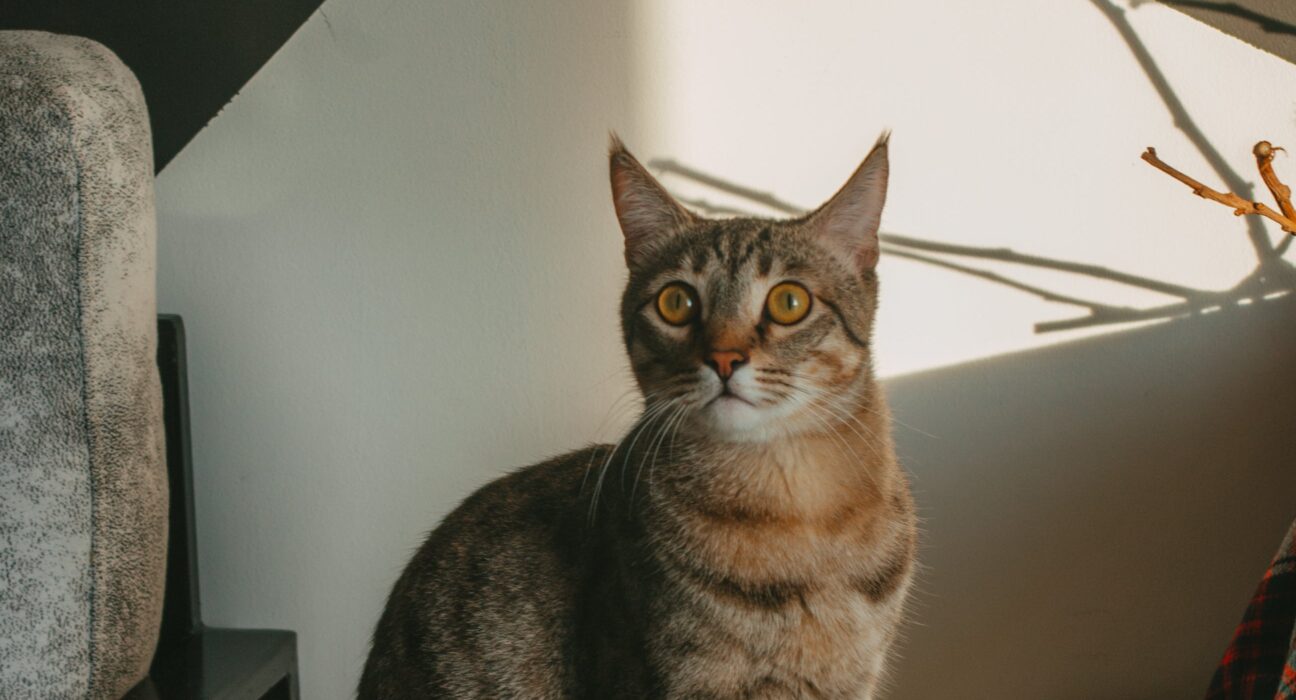Introduction
Welcome, individual cat aficionados! Training your catlike companion might appear to be an overwhelming undertaking, but do not dread it! This blog entry is your manual for transforming your free kitty into a polite buddy. We’ll start things off with a concise outline of why cat practice is significant for an agreeable concurrence and disperse a few normal fantasies that may be keeping you down.
A. Brief Outline of the Significance of Cat Training
Cat training isn’t about performing misdirects; it’s connected to making solid areas for an and developing a bright, quiet environment for both you and your shaggy companion. Arranged cats are less disposed to take part in unfortunate behaviour, making them an enjoyable pet to have around. Furthermore, it’s a wonderful technique for stimulating their minds and keeping them powerful.
B. Dispelling Common Myths About Cat Training
How about we expose the misinterpretations that encompass cat practice. In spite of mainstream thinking, cats are teachable animals, and age isn’t a restriction. Whether you have a playful cat or a sophisticated senior cat, training can influence their behaviour. Thus, let go of the idea that cats are un-trainable, and we should set out on this astonishing excursion together!
II. Understanding Cat Behaviour
Before plunging into training methods, we should investigate the puzzling universe of cat behaviour. Understanding your cat’s regular impulses and figuring out how to decipher their non-verbal communication are significant starting points for powerful training.
A. Exploring Natural Cat Behaviours
Cats are territorial, curious creatures with a penchant for routine. Exploring their instincts, such as scratching, hunting, and grooming, will help you tailor your training methods to align with their natural behaviours. By doing so, you can make training a more enjoyable experience for both parties.
B. Recognising Body Language and Signals
Ever wondered what your cat’s tail position or ear movement means? Cats communicate through their subtle body language. Perceiving these signs is vital to understanding their mindsets and needs. As you leave the training venture, this information will empower you to change your method and guarantee a positive and tranquil experience for your cat.
III. Getting Started with Training
Now that we’ve laid the basis, now is the right time to focus in and begin with the genuine training process. Positive reinforcement, the right training climate, and presenting basic instruments are fundamental parts for progress.
A. Positive Reinforcement Standards
Positive reinforcement includes compensating your cat for acceptable conduct. This can be as basic as offering treats, acclaim, or a most loved toy when they follow an order or display wanted behaviour. Cats answer well to positive reinforcement, making a beneficial arrangement for both of you.
B. Selecting the Right Training Environment
Choosing the right setting for training is crucial. Opt for a quiet, comfortable space free from distractions where your cat can focus on learning. This helps create a positive association with training sessions and encourages active participation.
C. Introducing Basic Training Tools
Equip yourself with the right tools, such as clickers, target sticks, and treats. These tools enhance the training experience, making it more engaging for your cat. Clicker practice, in particular, is an effective method for reinforcing positive behaviour.
IV. Basic Commands for Cats
Now, let’s delve into teaching your cat some basic commands. Sit, stay, and come may seem like tricks reserved for dogs, but with the right approach, your cat can master these commands and more.
A. Teaching Simple Commands Like Sit, Stay, and Come
Contrary to popular belief, cats can learn basic commands. Start with simple cues, like sitting, by associating the command with a treat. Be patient, and with reliable positive reinforcement, your cat will catch on. Keep in mind that Rome wasn’t implicit a day, nor is an impeccably prepared cat.
B. Using Clicker Training Techniques
Clicker training includes pairing a particular sound (the snap) with a prize, reinforcing positive behaviour. This method is especially viable for molding explicit activities and behaviours. The click becomes a signal that tells your cat they’ve done something right, leading to quicker learning.
C. Incorporating Treats and Rewards
Treats are your secret weapon in cat training. Find your cat’s favorite treats and use them as rewards for good behavior. This positive association encourages your cat to repeat the desired actions. remember, moderation is key to prevent overindulgence.
V. Litter Box Training
Nobody likes managing litter box issues. Whether you have another little cat or a more seasoned cat encountering issues, we have the tips to make litter box practice a breeze.
A. Tips for Litter Box Training Little cats
Little cats might need a touch of direction with regards to utilizing the litter box. Guarantee the box is open, use a litter they like, and spot them in the box after dinners to empower legitimate end. Positive reinforcement plays an essential job here, so give them acclaim when they take care of business.
B. Tending to Litter Box Issues in More Experienced Cats
On the off chance that your more experienced cat is having litter box issues, precluding any clinical worries first is fundamental.Once you’ve got a clean bill of health, consider environmental factors, such as the location and type of litter. Addressing these issues can often resolve problems and get your cat back on track.
VI. Obedience Training
Nobody likes managing litter box issues. Whether you have another little cat or a more seasoned cat encountering issues, we have the tips to make litter box training a breeze.
A. Tips for Litter Box Training Little cats
Little cats might need a touch of direction with regards to utilizing the litter box. Guarantee the box is open, use a litter they like, and spot them in the box after dinners to empower legitimate end. Positive reinforcement plays an essential job here, so give them acclaim when they take care of business.
B. Tending to Litter Box Issues in More Experienced Cats
On the off chance that your more experienced cat is having litter box issues, precluding any clinical worries first is fundamental. Over time, they’ll make the connection, and you’ll have their attention when needed.Once your cat has nailed the basics, challenge them with more advanced commands. These can include high-fives, rolling over, or even fetching small toys. Keep sessions short and enjoyable, and always end on a positive note.
C. Consistency and Patience in Obedience Training
Consistency is the golden rule of cat training. Whether it’s responding to their name or performing a complex trick, repetition is key. Combine this with heaps of patience, and you’ll be amazed at what your cat can achieve.
VII. Addressing Behavioral Challenges
Every cat owner encounters behavioral challenges at some point. From scratching furniture to nocturnal antics, we’ve got positive solutions to address these issues head-on.
A. Normal Behavioral Issues in Cats
Understanding the most well-known behavioral difficulties, like scratching, gnawing, or exorbitant yowling, is the most vital move toward tackling them. Every behavior might have different main drivers, so tending to them is significant for progress.
B. Positive Methods for Addressing Unwanted Behavior
Instead of scolding or punishing, opt for positive methods to address unwanted behavior. For instance, provide scratching posts as an alternative to furniture or interactive toys for a cat who craves attention. Positive reinforcement diverts their concentration and helps bring an end to unfortunate things to do.
C. Understanding the Underlying drivers of Behavior Issues
Digging further into the underlying drivers of behavior issues is fundamental for long haul achievement. Whether it’s pressure, weariness, or a clinical issue, addressing the hidden reason adds to a more joyful and better-acted cat.
VIII. Interactive Play as Training
Playtime isn’t about silly buffoonery — it’s a significant device for mental and actual feeling. Integrating toys and games into training meetings adds an extra layer of commitment.
A. Using Playtime for Mental and Physical Stimulation
Cats are regular trackers, and playtime permits them to communicate this sense in a controlled climate. Draw in your cat with toys that copy prey behavior, empowering them to jump, pursue, and bat. This psychological and actual excitement isn’t tomfoolery yet additionally a vital part of a balanced training schedule.
B. Incorporating Toys and Games into Training Sessions
Turn playtime into a training opportunity by incorporating commands into the game. For example, use a wand toy to guide your cat through tunnels or obstacles. By combining play and practicing, you’re making the learning process enjoyable and reinforcing the bond between you and your furry friend.
IX. Training Tools for Cats
Investigate the universe of cat training devices, from clickers to target sticks. Understanding how these devices work and picking the right ones for your cat can improve the adequacy of your training meetings.
A. Overview of Cat Training Tools
Clickers, target sticks, and interactive toys—all these tools play a role in cat training. Each fills a particular need, whether it’s checking wanted behavior, directing your cat through workouts, or giving mental excitement. Find out about these instruments to make the most of your training meetings.
B. Choosing the Right Tools for Your Cat
Not all cats respond the same way to training tools.Some might favor the straightforwardness of a clicker, while others could connect better with an fair stick. Try different things with various apparatuses and notice your cat’s responses to figure out which ones resound most with them. Everything revolves around tracking down the ideal fit for your catlike buddy.
X. Challenges and Solutions
No training journey is without its challenges. From stubbornness to distractions, let’s address common issues and provide practical solutions to keep you on the path to success.
A. Common Challenges in Cat Training
From aloof attitudes to short attention spans, cats can present unique challenges during training.Distinguishing these difficulties is the most important move toward defeating them, so you can tailor your method likewise.
B. Troubleshooting and Problem-Solving
Troubleshooting is a valuable skill in cat training. In the event that your cat isn’t answering true to form, reconsider the practice climate, change your strategies, or look for counsel from individual cat proprietors. Critical thinking is a vital piece of the training system, and with diligence, you’ll track down arrangements that work for you and your cat.
XI. Building a Strong Bond Through Training
Training isn’t about shaping behavior; it’s a powerful tool for building a strong and trusting relationship between you and your cat. Let’s explore how the training journey enhances the human-cat connection.
A. Strengthening the Human-Cat Relationship
As you guide your cat through Practice, you’re making positive relationship with your presence. This fortifies the connection between you and your catlike buddy, cultivating a feeling of trust and friendship.
B. Positive Impacts of Training on a Cat’s Prosperity
Training isn’t about submission; it likewise adds to your cat’s general prosperity. Mental feeling, active work, and the feeling of achievement they gain from dominating commands all add to a more joyful, better cat. It’s a beneficial arrangement for the two players included.
XII. Conclusion
As we wrap up this comprehensive guide to training your cat, let’s recap the key principles and offer some final words of encouragement.
A. Recap of Key Training Principles
Positive reinforcement, understanding cat behavior, and consistency—these are the cornerstones of successful cat training. By applying these principles, you’re not teaching tricks; you’re creating a positive and enriching environment for your feline friend.
B. Encouragement for Cat Owners to Start Training
To all cat proprietors out there, go all in and begin prepearing your cat today! Whether you have a devilish little cat or a prepared senior, the advantages of training stretch out a long ways past a collection of stunts. It’s tied in with forging a more profound association and guaranteeing an agreeable concurrence with your four-legged friend.
In this way, put on your training cap, snatch those treats, and let the catlike fun start! Your cat’s true capacity anticipates, and together, you’ll open a universe of potential outcomes. Happy training!






